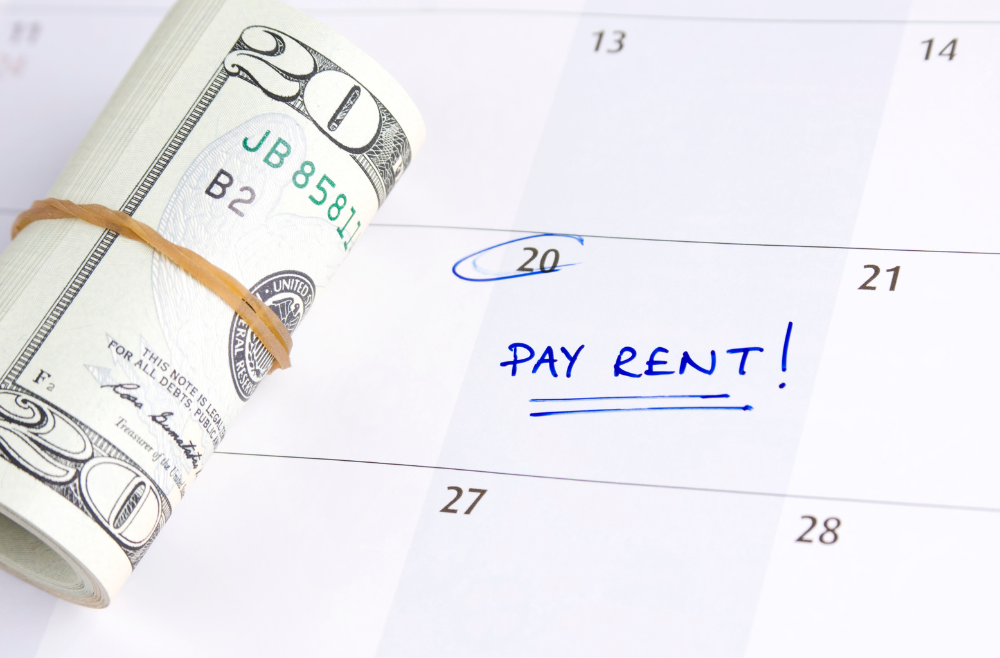Free Rent Estimate Calculator
Get Your Free Instant Rent Estimate
1400 Utah St, CA 19140
Range of rent prices in the area for similar properties.
Median Rent
$3,543
Average Rent
$3,634
25th Percentile
$3,228
75th Percentile
$4,058
Understanding The Numbers
This rent range is an estimate based on data of comparable properties in your area. The report uses public data sources, which are not always 100% accurate. Factors like seasonality, property upgrades, and current market conditions can impact rental values.
To provide you with the most accurate assessment, our team will do a custom analysis, pinpointing the rent in today’s market.
Please note: custom reports are only offered for San Diego County, Orange County and Riverside County owners with unfurnished properties.
Interested in Speaking to an Expert about your Rental Analysis?
Estimating Rental Valuation
Are you wondering how to pinpoint the perfect rental price for your property? Setting the right rate isn’t just about covering your expenses, it’s about maximizing your investment while staying competitive in the market. That’s where our free rent estimate calculator comes in handy. This tool is designed to help you identify that perfect rent range. Our free rent estimator factors in local market dynamics, property bedroom quantity, and location.
Let’s dive into how you can leverage this calculator to maximize your rental property profitability, while also remaining competitive in the market.
Table of Contents
How should I estimate rental value?
First, research your competition. Start by scoping out similar properties in the area and check out what they have to offer, what they’re charging, and how long they’ve been on the market. Then consider the unique aspects of your property, such as recent upgrades, amenities, or a prime location. After you have a good idea of what your property has to offer, use our free rent estimate calculator to get a range of rental prices that make sense for your area. With all this information, you’ll have a solid foundation for choosing a specific rent price.
If you need help with market research, consider reaching out to a residential property management company, like Good Life Property Management. We can take care of market research for you and place qualified tenants in your rental.
How much should I charge for rent?
Determining the exact amount you charge for rent encompasses many different aspects of your property. For instance, you should consider your neighborhood’s value, your property’s amenities, and its location. These attributes all play a role in determining the best rent price. A general rule of thumb is to determine 1% of your property’s value and set that number as your monthly rent. Colloquially, this is considered the 1% rule in real estate.
Let’s dive deeper into the different steps to take to find the best rental price for your property.
Step 1: Market research
The first and most crucial step is conducting thorough market research. This involves examining the current rental landscape in your area. You should focus on properties that are similar to yours in size, style, and location. Take note of their rental prices, but also consider their occupancy rates. A high-demand area, where properties rarely sit empty, could indicate room for higher rental prices. Utilize online real estate tools, like our free rent estimate calculator, and online rental listing websites, like Zillow or HotPads. Also, we recommend attending local open houses, and talking to real estate professionals to gather a comprehensive picture of the local rental market.
Step 2: Analyze comparable properties
Once you have a general sense of the market, it’s time to zero in on properties that are most similar to yours. These listings represent your direct competitors in the market. Look at homes with similar square footage, bedroom and bathroom counts, and amenities. Also, consider how far your property is from local hot spots, such as the downtown city center and/or the airport, compared to otherwise equivalent properties.
Step 3: Evaluate property features and upgrades
The distinct features and upgrades of your property will ultimately determine if you can pull off a higher rental price. For example, if you’ve recently renovated the kitchen, installed energy-efficient windows, installed hardwood floors, or completed other property upgrades, then you’re more likely going to be successful in a higher rental price agreement.
Remember, it’s not just about the tangible upgrades; intangible benefits like a stellar view, a quiet street, or proximity to schools, or airports, can also contribute to your property’s perceived value.
Step 4: Factor in operating costs
Another important consideration is your operating costs. This includes your mortgage, property taxes, insurance, maintenance, and any utilities or property management services you may pay for. Ideally, your rental price should cover your expenses; however, if it doesn’t, property appreciation will still make your real estate investment worthwhile in the long run. Keep in mind that while covering costs is critical, the market will ultimately dictate the maximum rent you can realistically charge.
Step 5: Adjust for market conditions and seasonality
The rental market is dynamic. It’s traditionally influenced by economic factors, seasonal trends, and local developments. For example, a booming job market can increase demand and support higher rents, while an economic downturn can decrease your property’s perceived value.
Seasonality also plays a role; demand for rentals often peaks in the summer months. Stay attuned to these factors and be prepared to adjust your rental price accordingly to remain competitive and attractive to potential tenants.
How to use our free rent estimate calculator
- Gather property details: Gather the address of your property, its building type, and number of bedrooms and bathrooms your property has.
- Input your property’s information into the calculator: With your property details at hand, input this information into the respective fields of our free rent estimate calculator.
- Analyze the estimated rental range: After inputting your data, click the ‘Calculate’ button to generate your estimated rental price range. You will receive data about the median rent, average rent, 25th percentile, and 75th percentile. These figures are derived from a comprehensive analysis of similar properties and current market trends. Keep in mind that the results in our free rent estimate calculator might vary. The estimated rent range is ultimately determined by factors such as market demand, seasonal fluctuations, or tenant preferences.
What are the best rent calculators?
In the constantly changing world of property management, finding the right tools to set your rental price can be a game-changer. Besides our free rent estimate calculator, here are four other market rent calculators that stand out for their precision, user-friendliness, and comprehensive market data.
- Zillow’s Rent Zestimate: Zillow is renowned for its extensive database and easy-to-navigate interface, providing landlords with a quick snapshot of potential rental income.
- Rentometer: This rent calculator shines by offering detailed analysis on rent prices within specific neighborhoods, making it a go-to for localized insights.
- Cozy.co: While primarily a property management tool, the company offers an integrated rent estimate feature that draws from extensive market research, ensuring your pricing strategy is both competitive and fair.
- RentRange: Although at a cost, Rent Range delivers in-depth market analysis and rental rate suggestions, making it invaluable for those seeking more detailed data.
Pros and Cons of online free rent estimate calculators
Recently, online free rent estimate calculators have emerged as invaluable tools for landlords and property managers. These calculators offer a quick and easy way to gauge the potential rental income of a property, but like any tool, they come with their own set of pros and cons. Let’s explore those in more depth…
Pros:
- Ease of use: With user-friendly interfaces, these calculators simplify the complex task of rent estimation, making it accessible to everyone, from seasoned landlords to first-time property investors, to find a fair rental range.
- Immediate results: In just a few clicks, you will receive an estimated rental price, saving you from the time-consuming process of market research and data analysis.
- Access to broad market data: These calculators draw on extensive databases, offering insights based on a wide array of properties and market trends, which might be difficult for an individual to compile alone.
- Cost-effective: Being free, they provide valuable information without adding to your list of expenses, which is particularly beneficial for those operating within tight budgets.
- Benchmarking tool: Free rent estimate calculators serve as a great starting point for setting rental prices, allowing landlords to benchmark their properties against similar ones in the area.
Cons:
- Lack of local nuances: While broad market data is useful, these calculators may not capture the unique aspects of local markets or specific neighborhoods, potentially leading to less accurate estimates.
- One-size-fits-all approach: Every property is unique, and these calculators might not fully account for all of the individual features or upgrades that can significantly impact a property’s rental value.
- Over-reliance risk: Solely relying on these estimates without further research or professional advice could lead to pricing strategies that are not aligned with the market. For example, if you advertise your property for a price way out of the normal range, you risk (1) looking like a scam, or (2) being passed by potential tenants. In both these cases, you risk a low occupancy rate.
- Data currency: The real estate market is dynamic, and there’s a risk that the data used by free calculators may not be up-to-date, leading to estimates that don’t reflect current market conditions.
- Generic recommendations: These tools typically offer generic advice that don’t consider your specific property features, which can lead to less optimal decision-making.
In summary, online free rent estimate calculators can be a double-edged sword. They offer a convenient and cost-effective way to tap into broad market insights. However, their generalized approach may not fully capture the value of your property or the local market’s trends. Balancing their use with localized research and professional advice can help you make an informed and effective decision on your asking price.
How do I raise rent prices?
Raising rent for your tenants can be tricky and become awkward, fast. Navigating this process with grace and professionalism is key to maintaining a positive relationship with your tenants and securing their occupancy. Here’s a guide on the do’s and don’ts to help you manage rent increases effectively.
Do: Conduct thorough market research
Take the time to conduct comprehensive market research before deciding increasing the rent. Understanding the current market rates for similar properties in your area will give you the evidence and data you need to make an effective and informed decision.
Part of your market research can include using tools such as our free rent estimate calculator. As mentioned above, this will help you gain valuable information about average rental ranges in the geographical area. In addition, market research will help confirm that your rental rates remain competitive and fair. When you communicate the increase to your tenants, having this information at hand will help justify the increase.
Don't: Spring the increase on tenants unexpectedly
Avoid surprising your tenants with an abrupt rent increase without proper notice. Such an approach can lead to unnecessary tension and may even result in losing reliable tenants. The element of surprise in financial matters, especially ones as significant as housing costs, can create stress and deteriorate the trust you’ve built with your tenants. Instead, provide clear and timely notification, adhering to the lease agreement and local laws regarding notice periods. This transparency respects your tenants’ need to plan their finances. In addition, it demonstrates your integrity as a landlord.
For more information, check out our full guide on how to raise your tenant’s rent the right way.
Do: Communicate effectively and empathetically
Ensure your communication about the rent increase is clear, detailed, and empathetic. When drafting the notice, explain the reasons behind the increase. For example, explain that changing market dynamics, property improvements, or increased operating costs caused you to increase rent.
Also, personalize your communication to reflect your understanding of your tenant’s perspective, and be open to discussing the change further if they have questions or concerns. This level of openness not only fosters a positive relationship, but also helps tenants understand the rationale behind the increase and makes them more likely to accept the change.
Don't: Forget to document everything
Document all communications and agreements related to the rent increase. Keeping a detailed record is crucial for clarity and can serve as protection for both parties in case of misunderstandings or disputes. Make sure that all notices, tenant responses, and any adjustments to the lease terms are properly recorded and stored.
Do: Check your local jurisdiction for laws related to raising rent
Before considering a rent increase, it’s crucial to familiarize yourself with the rental laws specific to your area. For instance, in California, landlords cannot raise the rent by more than 10% with each lease renewal. This regulation ensures fairness in the rental market and protects tenants from unexpected and steep rent hikes.
As a landlord, staying informed about such laws is essential to navigate rent adjustments legally and ethically. Always consult the latest California rental laws or seek legal advice to ensure compliance before proceeding with rent increases. This approach not only safeguards your interests but also maintains a positive relationship with your tenants.
Don’t: Raise rent during a lease agreement
Landlords must adhere to the terms agreed upon in the lease agreement, which includes the rent amount for the duration of the lease. Raising the rent mid-lease is generally only permissible if specifically outlined in the lease terms. Such actions can breach the contract, leading to potential legal disputes and damaging the trust between landlords and tenants. Generally, you must wait until the lease is up for renewal before proposing a rent increase. This practice ensures transparency, upholds the lease agreement’s integrity, and provides tenants with sa stable and predictable housing cost.
FAQs
What is the formula for rental rate?
When it comes to setting the perfect rental price for your property, a rule of thumb is to aim for about 1% of your home’s total market value per month. Depending on the unique upgrades and amenities of your property and the state of the local market, you might find yourself adjusting that figure slightly, within a spectrum of 0.8% to 1.1%. This range gives you the leeway to account for your property’s special features, its location, and the current demand in your area.
How do you calculate the 1% rule for a rental property?
The 1% rule states that you should be renting out your property for 1% of its estimated market value per month. For example, if your home is worth $200,000 then you should be renting it for $2,000 a month.
What percentage should you make on a rental?
While there’s no one-size-fits-all answer, a good rule of thumb is aiming for a profit margin somewhere between 6% to 8% per year. This allows you to cover your expenses, and still have extra money left over to reward your investment and property management skills. Keep in mind that not all properties will have a positive cash flow. Your mortgage and operating costs could be higher or lower based on your property’s location, the current market, and how much you’ve invested in making your rental the best on the block.
Further Reading
Resources
Give us a call for a free consultation!
Our team is ready to help with your property management needs.

Chloe Slater
DRE #02161657
Adam Manly
DRE #01953442
Business Development Managers
- 858-207-4595
- clients@goodlifemgmt.com
Good Life Promise
Real protection. Real Value. Real peace of mind.

Tenant Damage Coverage
We cover up to $3,500 in total reimbursement for physical damage, above the security deposit, caused by the tenant or their approved pet.

Eviction Protection
If a tenant we place needs to be evicted for any reason, not just nonpayment - we’ll cover up to $3,000 in court and legal fees, including attorney costs.

Releasing Support
If a tenant we placed breaks their lease within the first year or is evicted, we’ll waive the leasing fee to find a qualified replacement at no cost to you.

Money back guarantee
Still unsure? Our six-month money-back commitment refunds up to 6 months of management fees if you’re not satisfied. No hassle, no hard feelings.

No long-term commitments
Stay because you want to, not because you have to. Month-to-month management with no long-term commitments required.

Risk and Fraud Protection
We protect your investment with rigorous tenant screening, secure payment systems, and proactive measures to minimize risk and prevent fraud.
Total Value:
over $10,000 in real, tangible protection.
- Eviction Management
- Rent Collection & Distribution
- Annual Inspections
- Lease Enforcement
- Expert Marketing & Listing
- Professional property photos
- On-Demand Showings
- Thorough Tenant Screening
- 24/7 Maintenance
- Rent-Ready Repairs & Cleaning
- Tax Document Preparation
- Move-in and Move-outs




Schedule a call with a
Property Management Expert
Here’s what you’ll learn from the call:
- How much your property will rent for
- How much property management will cost you
- How long it will take to rent your property
Good Life Blogs
We believe that education is empowering.
Check out our list for San Diego military discounts! San Diego is home to over 115,000 service members. In this article, we share 75 deals and discounts in San Diego, California for active duty and military veterans.
Renting out property can be a lucrative venture. But when tenants fall behind on payments, it can quickly become a stressful and complicated ordeal. In this comprehensive guide, we’ll walk you through the steps to take when you tenant doesn’t pay rent.
When deciding whether or not to hire a property manager, the first thing on everyone’s mind is property management cost. In this article, we break down what kind of fees you will encounter if you hire a property manager.



